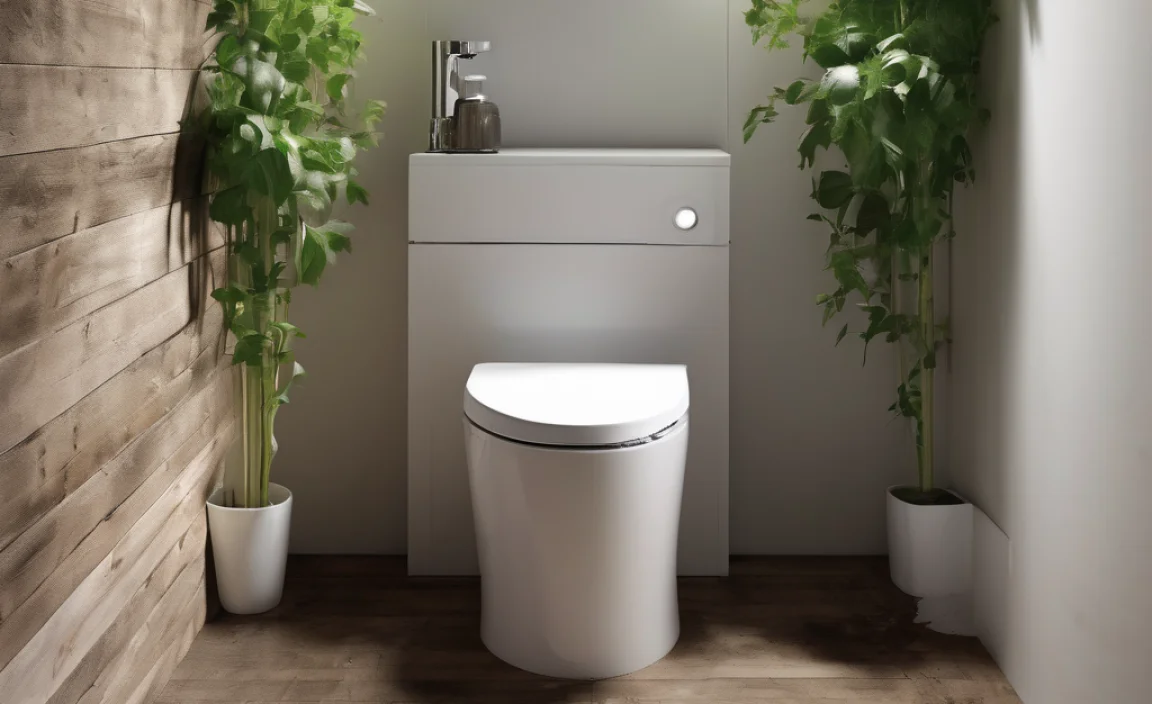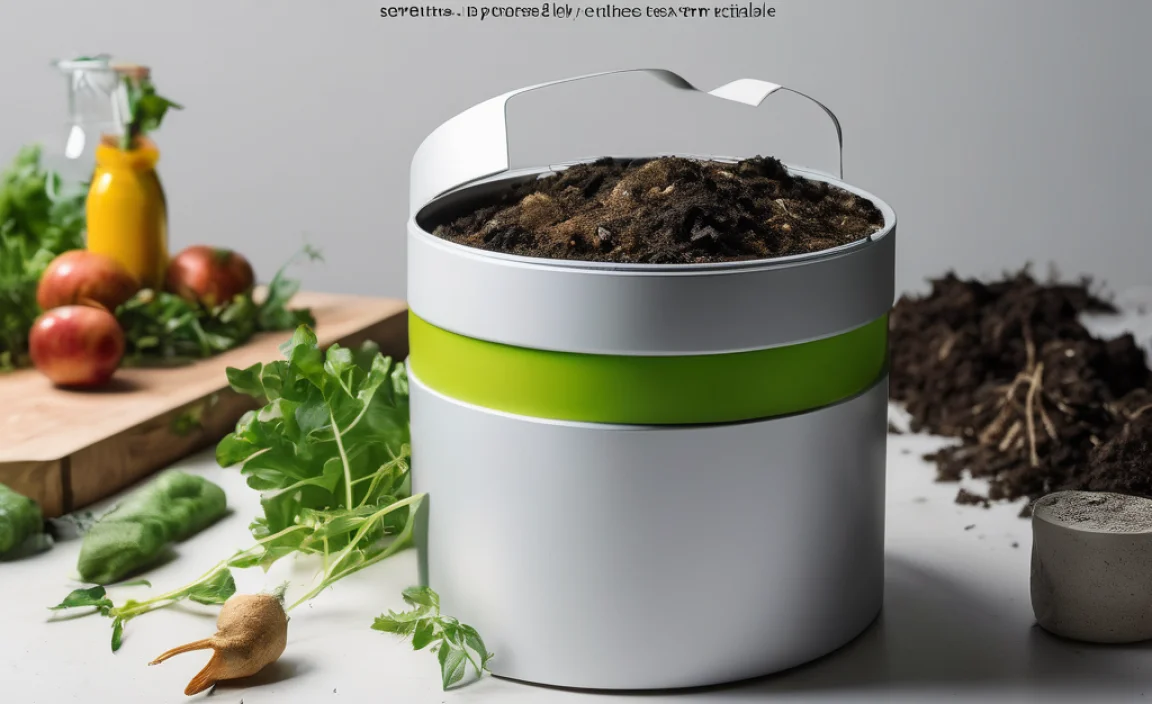Quick Summary: A standard flush toilet is typically assigned a fixture unit value of 4 to 6 when calculating plumbing load. This number helps determine the correct size of drain pipes needed to handle wastewater effectively. Understanding fixture units ensures your plumbing system meets demand without backups or leaks.
Ever wondered why your toilet seems to have its own special place in the plumbing world? It’s all about something called “fixture units.” Don’t worry, it’s not as complicated as it sounds! Figuring out how many fixture units a toilet has is crucial for ensuring your plumbing system works smoothly. Get this wrong, and you might end up with slow drains or, even worse, backups.
In this guide, we’ll break down what fixture units are, why they matter, and exactly how they relate to your toilet. By the end, you’ll have a clear understanding of how to keep your plumbing flowing freely. Let’s dive in!
Understanding Fixture Units
Let’s start with the basics: What exactly is a fixture unit? Think of it as a plumbing “currency.” Each plumbing fixture in your home—toilets, sinks, showers, etc.—gets assigned a certain number of these units. This number represents how much water the fixture is expected to use and how quickly it drains that water away.
Why Fixture Units Matter
Why do we need this system? Simple: to size drain pipes correctly. If the pipes are too small, they won’t be able to handle the flow from all your fixtures, leading to clogs and backups. If they’re too large, you’ve wasted money on unnecessary materials, and you might even have issues with slow drainage (which can also cause clogs over time).
Fixture units help plumbers and builders calculate the total load on your drainage system, ensuring everything flows smoothly and efficiently. It’s like figuring out how many lanes you need on a highway to handle the expected traffic.
How Fixture Units are Determined
The number of fixture units assigned to each fixture is based on a few key factors:
- Water Consumption: How much water does the fixture use per flush or minute?
- Drainage Rate: How quickly does the water drain away?
- Frequency of Use: How often is the fixture likely to be used?
These factors are all considered to come up with a standardized number that represents the fixture’s impact on the plumbing system. Plumbing codes, like the Uniform Plumbing Code (UPC) and the International Plumbing Code (IPC), provide tables that list the fixture unit values for various fixtures. These codes are regularly updated to reflect changes in plumbing technology and water conservation practices.
How Many Fixture Units is a Toilet?
So, let’s get to the main question: How many fixture units does a toilet have? The answer isn’t always a simple number, as it can depend on a few factors, including whether it’s a residential or commercial setting, and the type of flush mechanism.
Residential Toilets
In a typical home, a standard flush toilet is usually assigned a value of 4 to 6 fixture units. This range accounts for variations in toilet design and flush volume. Older toilets, which use more water per flush, tend to have higher fixture unit values.
Here’s a more detailed breakdown:
- Older Toilets (3.5 gallons per flush or more): 5-6 fixture units
- Modern Toilets (1.6 gallons per flush or less): 4 fixture units
- Dual-Flush Toilets: 3-4 fixture units (depending on the flush setting)
Commercial Toilets
Commercial toilets generally have higher fixture unit values than residential toilets. This is because they are used more frequently and often have larger flush volumes. The fixture unit values for commercial toilets can range from 6 to 8 or more, depending on the specific type and usage.
Here’s a comparison table for reference:
| Toilet Type | Fixture Units (Residential) | Fixture Units (Commercial) |
|---|---|---|
| Older Toilet (3.5+ GPF) | 5-6 | 7-8 |
| Modern Toilet (1.6 GPF) | 4 | 6 |
| Dual-Flush Toilet | 3-4 | 5-6 |
Factors Affecting Fixture Unit Values
Several factors can influence the fixture unit value assigned to a toilet:
- Flush Volume: Toilets that use more water per flush will have higher fixture unit values.
- Type of Flush Mechanism: Gravity-fed toilets may have different values than pressure-assisted toilets.
- Local Plumbing Codes: Your local plumbing codes may have specific requirements that affect fixture unit values.
- Usage: High-traffic bathrooms might require adjustments to the calculations.
Calculating Plumbing Load
Now that you know how many fixture units a toilet represents, let’s talk about how to calculate the total plumbing load in your home. This is crucial for ensuring your drain pipes are properly sized.
Step-by-Step Calculation
Here’s how to calculate the total plumbing load:
- List All Fixtures: Start by listing every plumbing fixture in your home (toilets, sinks, showers, washing machines, etc.).
- Assign Fixture Units: Assign the appropriate fixture unit value to each fixture based on the tables in your local plumbing code.
- Add Up the Values: Add up all the fixture unit values to get the total plumbing load.
For example, let’s say you have:
- 1 Toilet (4 fixture units)
- 2 Sinks (1 fixture unit each)
- 1 Shower (2 fixture units)
- 1 Washing Machine (3 fixture units)
The total plumbing load would be 4 + 1 + 1 + 2 + 3 = 11 fixture units.
Sizing Drain Pipes
Once you have the total plumbing load, you can use plumbing code tables to determine the appropriate size of drain pipes. These tables specify the maximum number of fixture units that a given pipe size can handle. For example, a 3-inch drain pipe might be able to handle up to 20 fixture units, while a 4-inch pipe can handle significantly more.
Here’s a simplified example of a drain pipe sizing table:
| Pipe Size (inches) | Maximum Fixture Units |
|---|---|
| 1 1/2 | 3 |
| 2 | 6 |
| 3 | 20 |
| 4 | 160 |
If your total plumbing load is 11 fixture units, you would need at least a 3-inch drain pipe to handle the flow. Always consult your local plumbing code for the most accurate and up-to-date information.
Example Scenario
Let’s walk through a practical example to illustrate how this works. Imagine you’re renovating your bathroom and adding a new toilet. You want to make sure your existing plumbing can handle the increased load.
- Existing Fixtures: You already have a sink (1 fixture unit) and a shower (2 fixture units).
- New Fixture: You’re adding a modern toilet (4 fixture units).
- Total Load: The total plumbing load for the bathroom will be 1 + 2 + 4 = 7 fixture units.
If your bathroom is connected to a 3-inch drain pipe (which can handle up to 20 fixture units), you’re in good shape. However, if it’s connected to a smaller pipe, you may need to upgrade to avoid potential problems.
Common Mistakes to Avoid
When dealing with fixture units and plumbing load calculations, it’s easy to make mistakes that can lead to plumbing issues. Here are some common pitfalls to watch out for:
- Ignoring Local Codes: Plumbing codes vary from place to place, so always check your local requirements.
- Underestimating Usage: If you have a large family or frequent guests, consider increasing the fixture unit values to account for higher usage.
- Forgetting Future Expansion: If you plan to add more fixtures in the future, factor that into your calculations now to avoid costly upgrades later.
- Improper Pipe Sizing: Using the wrong pipe size can lead to clogs, backups, and other plumbing problems.
- DIY Without Knowledge: Plumbing can be complex, and mistakes can be costly. If you’re not comfortable with plumbing work, hire a qualified plumber.
When to Call a Professional
While some plumbing tasks are DIY-friendly, others require the expertise of a professional plumber. Here are some situations where it’s best to call in the pros:
- Complex Plumbing Renovations: If you’re completely redoing your bathroom or kitchen, a plumber can ensure everything is done correctly and up to code.
- Sewer Line Issues: Problems with your main sewer line can be messy and dangerous, so it’s best to leave them to the professionals.
- Persistent Plumbing Problems: If you’re experiencing recurring clogs, leaks, or other plumbing issues, a plumber can diagnose the underlying cause and provide a lasting solution.
- Unfamiliar Plumbing Codes: Navigating plumbing codes can be tricky, so a plumber can help you understand and comply with all the requirements.
A qualified plumber will have the knowledge, experience, and tools to handle even the most challenging plumbing jobs safely and effectively. They can also help you avoid costly mistakes and ensure your plumbing system is functioning at its best.
Tips for Maintaining Your Plumbing System
Keeping your plumbing system in good shape can prevent many common problems and extend the life of your pipes and fixtures. Here are some tips for maintaining your plumbing system:
- Regularly Check for Leaks: Inspect your faucets, toilets, and pipes for any signs of leaks. Even small leaks can waste water and cause damage over time.
- Avoid Clogging Drains: Be careful about what you flush down the toilet and put down the drains. Avoid flushing anything other than toilet paper, and use drain screens to catch hair and debris.
- Flush Toilets Properly: Ensure your toilets are flushing properly and not running continuously. A running toilet can waste a lot of water and increase your water bill.
- Insulate Pipes: Protect your pipes from freezing during cold weather by insulating them with foam sleeves or heat tape.
- Clean Drain Stoppers: Regularly clean the drain stoppers in your sinks and showers to remove hair and debris that can cause clogs.
- Schedule Regular Inspections: Have your plumbing system inspected by a professional plumber every few years to identify and address any potential problems before they become major issues.
FAQ About Fixture Units
1. What happens if I underestimate the number of fixture units?
If you underestimate the number of fixture units, your drain pipes may be undersized. This can lead to slow drains, clogs, and even backups. It’s always better to overestimate slightly to ensure your plumbing system can handle the load.
2. Can I add more fixtures to my plumbing system without upgrading the pipes?
It depends. If the existing pipes are already close to their maximum capacity, adding more fixtures could overload the system. You may need to upgrade the pipes to accommodate the increased load. Consult a plumber to assess your situation.
3. Where can I find the fixture unit values for different plumbing fixtures?
Fixture unit values are typically listed in your local plumbing code. You can also find them in the Uniform Plumbing Code (UPC) or the International Plumbing Code (IPC). These codes are available online or at your local library.
4. Are fixture units the same for residential and commercial buildings?
No, fixture unit values can be different for residential and commercial buildings. Commercial buildings typically have higher usage rates, so their fixture unit values are often higher.
5. How do I calculate the fixture units for a fixture that isn’t listed in the plumbing code?
If you can’t find the fixture unit value for a particular fixture, consult a plumber or plumbing inspector. They can help you determine an appropriate value based on the fixture’s water consumption and drainage rate.
6. Does the type of pipe material affect the number of fixture units it can handle?
No, the type of pipe material doesn’t directly affect the number of fixture units it can handle. However, different pipe materials have different flow characteristics, which can indirectly affect the overall performance of the plumbing system. The pipe size is the primary factor in determining fixture unit capacity.
7. Can I reduce the number of fixture units by using low-flow fixtures?
Yes, using low-flow fixtures can reduce the number of fixture units assigned to those fixtures. This can help you reduce the overall plumbing load and potentially avoid the need for larger drain pipes. Check your local plumbing code for specific fixture unit values for low-flow fixtures.
Conclusion
Understanding fixture units might seem a bit technical at first, but it’s a crucial part of ensuring your plumbing system works efficiently and reliably. Knowing how many fixture units a toilet represents—typically 4 to 6 in residential settings—helps you calculate the total plumbing load and size your drain pipes accordingly. By following the steps and tips outlined in this guide, you can confidently tackle plumbing projects and maintain a smoothly flowing home. Don’t be afraid to consult your local plumbing codes and, when in doubt, call a professional plumber. With a little knowledge and the right approach, you can keep your plumbing system in top shape for years to come.



